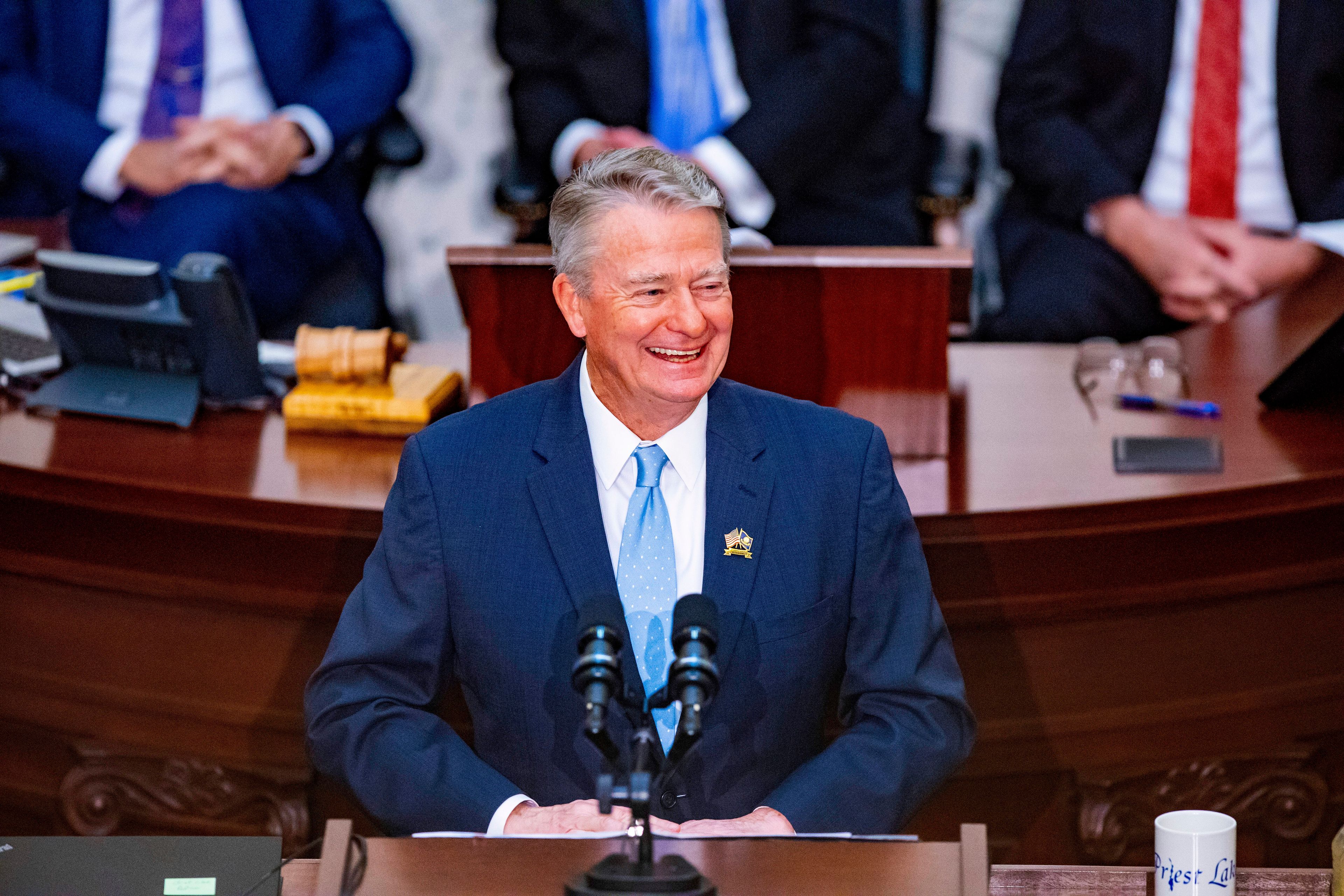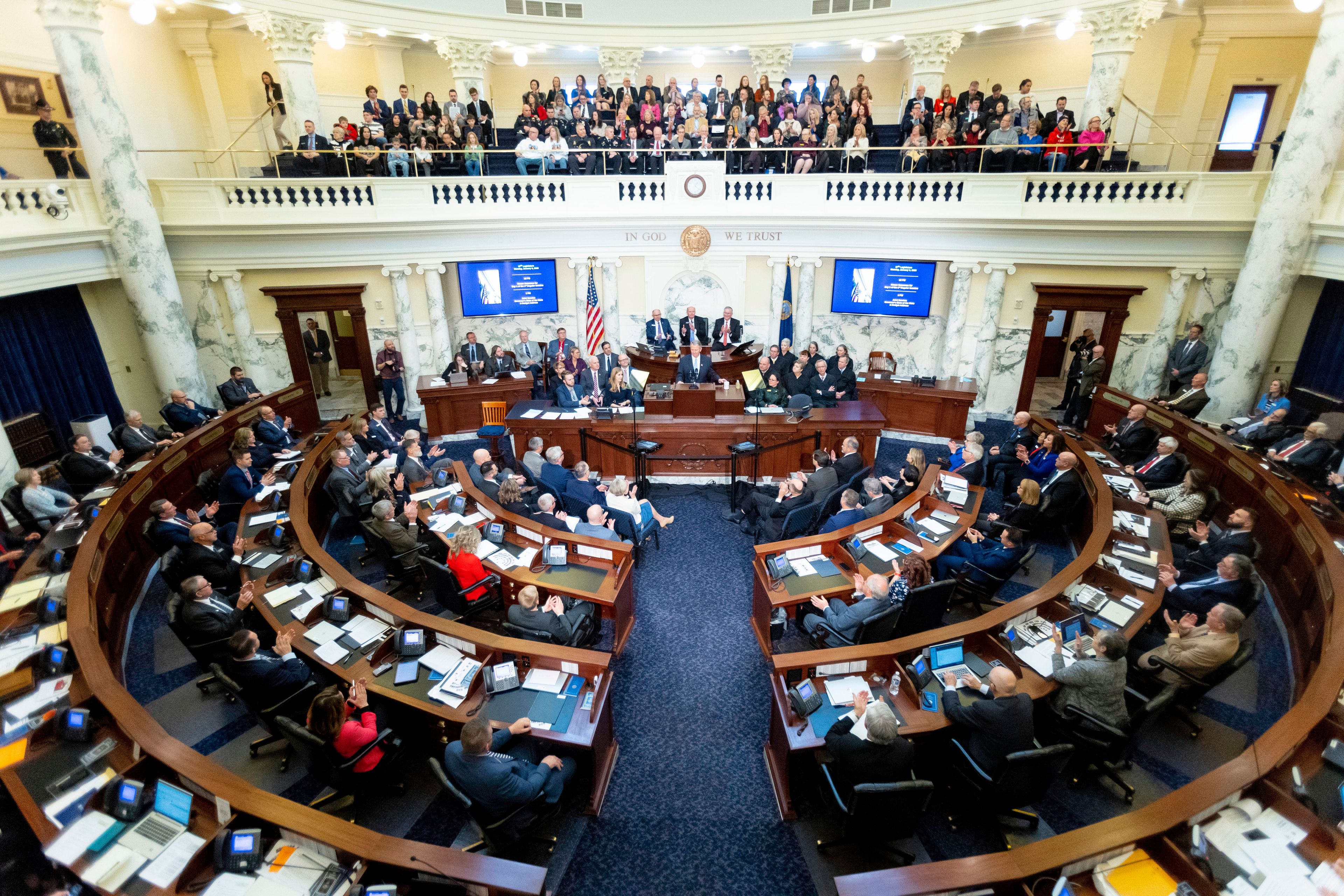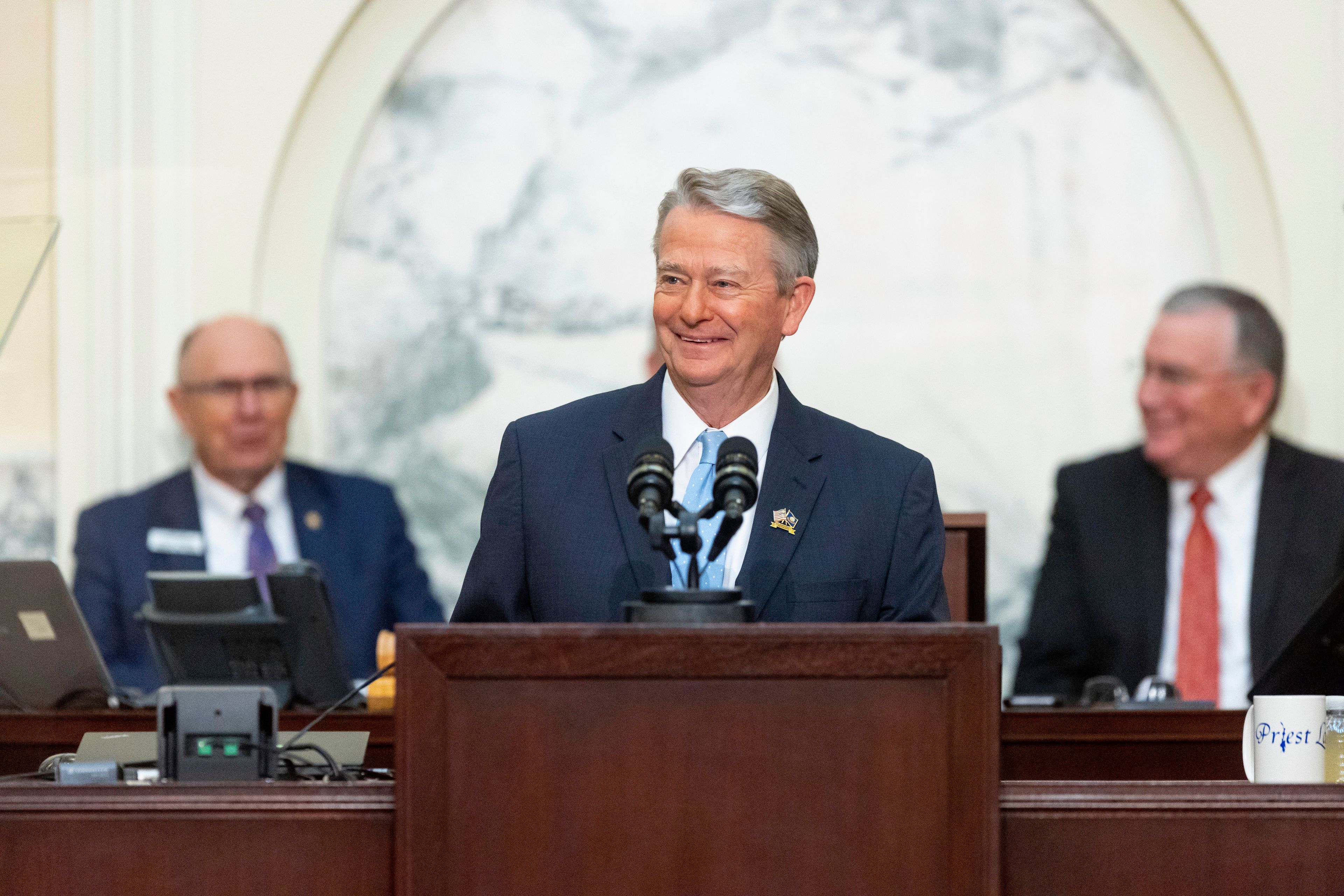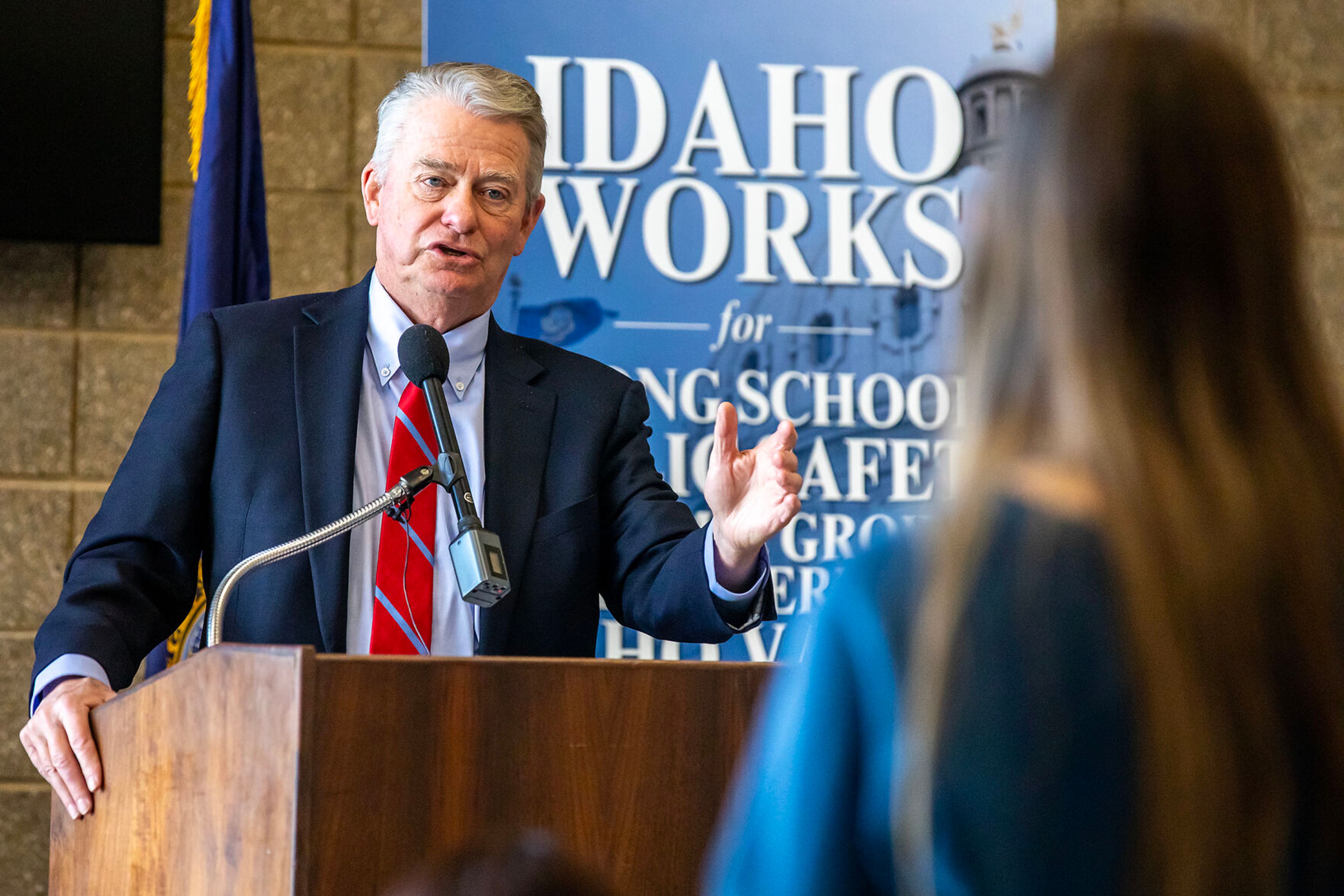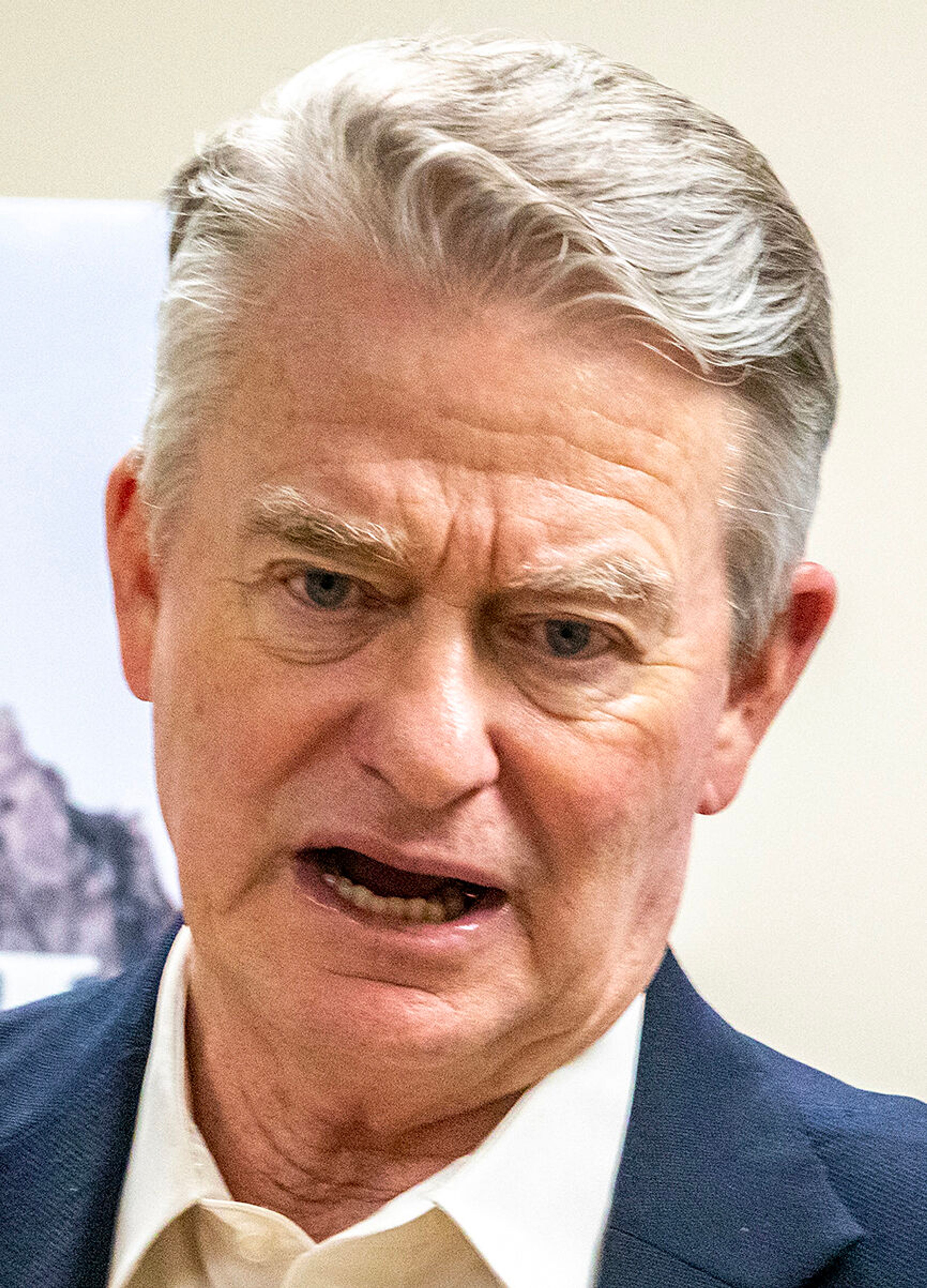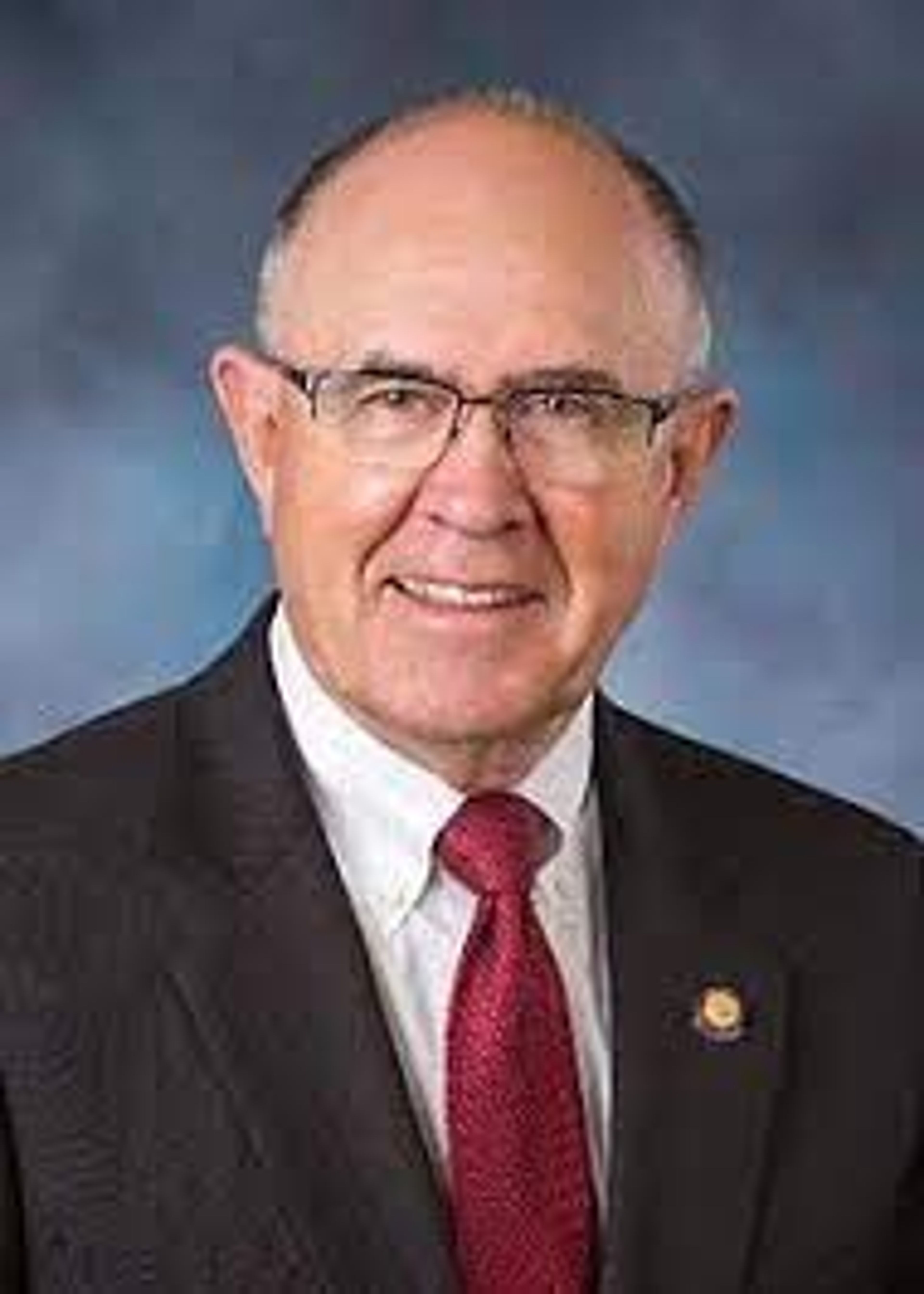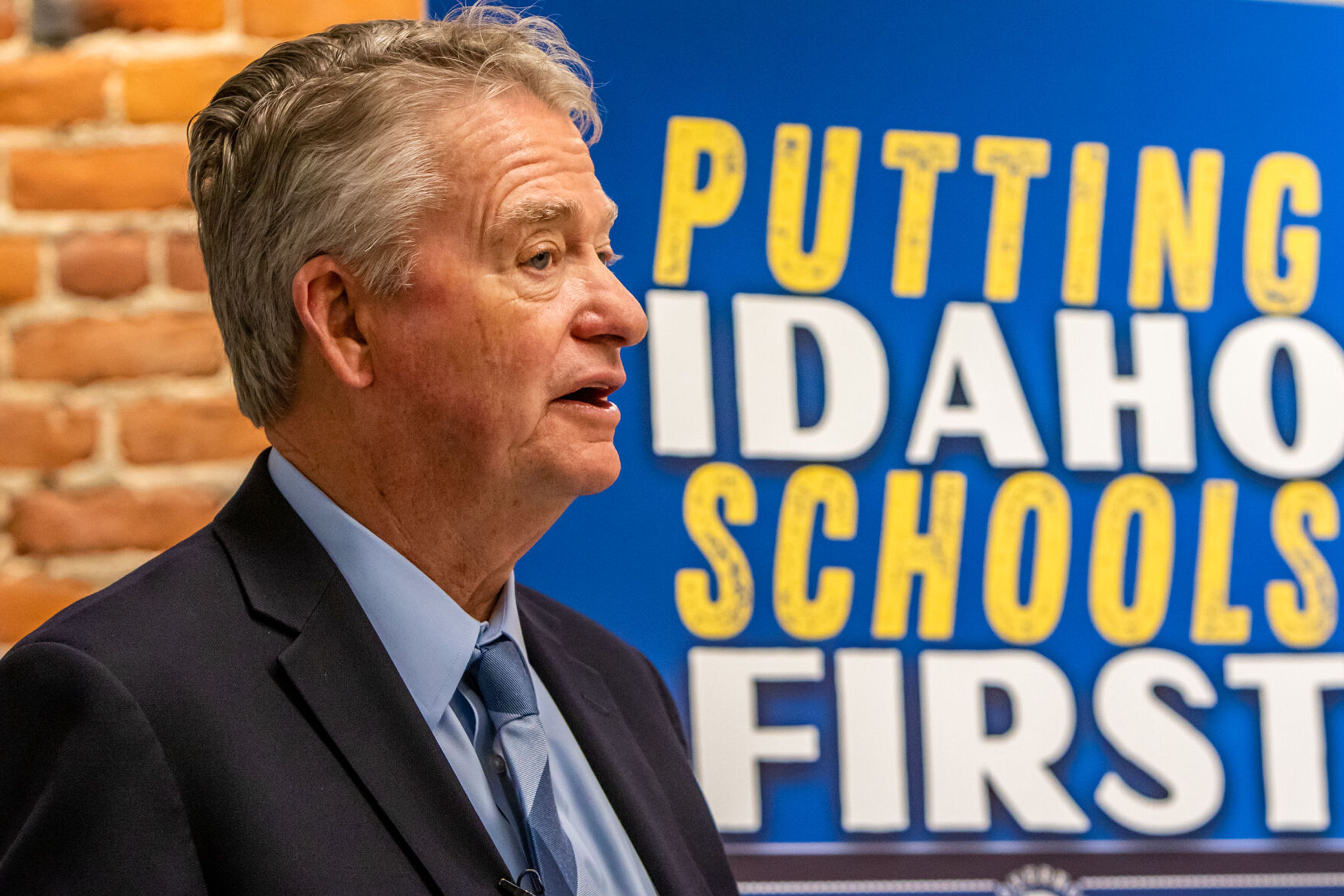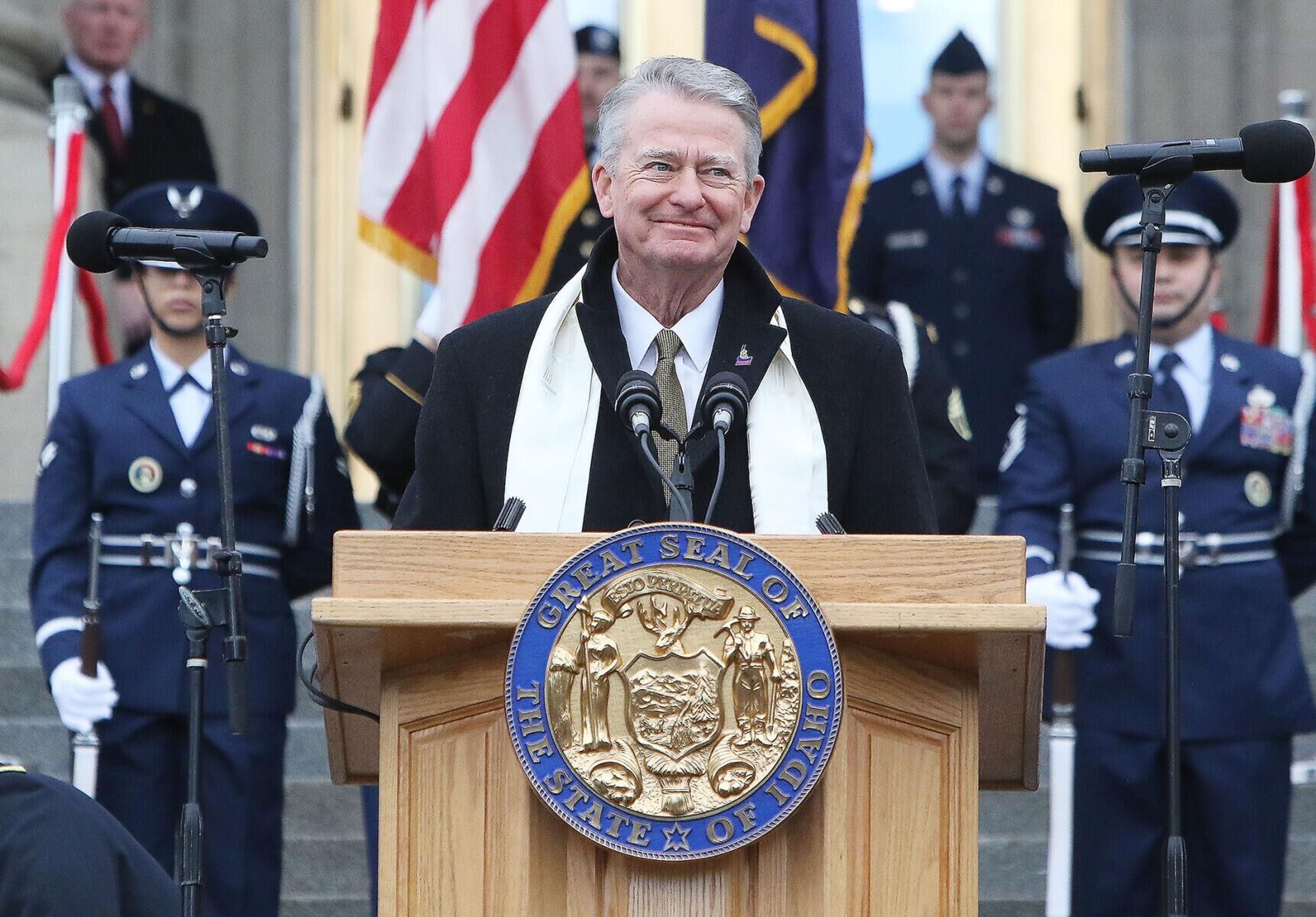‘Education is our priority’
In State of the State address, Idaho governor proposes more school funding, tax relief and infrastructure fixes
BOISE — Idaho Gov. Brad Little is looking to continue his focus on education by prioritizing teacher pay in the 2023 legislative session.
“When we show teachers we support them, we’re showing families their child’s education is our priority,” Little said Monday in his annual State of the State address.
In last year’s single-day September special session, Little recommended — and the Legislature passed — a bill to dedicate $410 million a year in continuing funding for education, with $330 million of that going to the public school income fund for K-12 public schools.
This year’s proposed budget “delivers” on those promises, according to the governor’s Budget Director Alex Adams. In the governor’s proposed plan, which he called “Idaho first,” Little emphasized that the first priority is education.
“We are not backing down on education,” Little said, “we are doubling down on education.”
The total general fund increase proposed is a 5% increase over last year’s budget.
Little also called for property tax relief, infrastructure improvements, improved pay for law enforcement and behavioral health investments. The governor additionally recommended preparations for a predicted economic recession.
Both Republican and Democratic leadership expressed support for the governor’s proposals following the speech.
Education
In his budget proposal, Little called for $145 million for improving teacher pay statewide. He wants to move the starting teacher salary to $47,477, which he said would put it in the top 10 nationally — up from where the state currently ranks at 41st. He also recommended a pay increase of $6,359 for all teachers. For classified staff, which include cafeteria workers, bus drivers and paraprofessionals, Little recommended the state put $97.4 million to improve their pay.
Last year, he recommended using federal American Rescue Plan Act funds to give $1,000 bonuses to all teachers and to speed up the teacher career ladder by funding two years’ worth at a cost of $104 million.
Following the address, Superintendent of Public Instruction Debbie Critchfield said she is very supportive of the education proposals, especially the teacher pay. She said she’s heard from many border communities in particular about their challenges in recruiting because the pay in neighboring states is much higher. Critchfield said she also wants to look at what the Department of Education for nonfinancial ways to also improve recruitment and retention.
Little also wants to make permanent the “Empowering Parents” grant program, which was implemented last year. The grants can be used for education needs, from tutoring to technology, and are up to $1,000 per student or $3,000 per family. Little’s recommendation is to invest an additional $30 million in this program.
“The Empowering Parents grants are effective, popular and worthy of continued investment,” he said. “Most importantly, they keep parents in the driver’s seat of their children’s education, as it should be.”
He also said the state’s commitment to public schools is both a “constitutional” and “moral obligation.”
“My Idaho first plan delivers on both the constitutional mandate and the mandate from the voters of Idaho by investing in our public schools,” he said.
Overall, K-12 spending increased 16%, which includes the approximately $300 million from dedicated funding that was allocated during the special session, according to Adams.
This increase is something Sen. Dan Foreman, R-Moscow, is against.
“He talked about spending more money on education, and I’m against that,” Foreman said in an interview. “I want to see a better return on investment.”
Foreman said that while he finds education important and should be a focus, the quality of education needs to be evaluated before putting more money toward it. He said societal issues — which he named as drugs, the “breakup of the family unit” and “interference by the federal government,” especially in regards to the pandemic — are affecting school performance, and the recent increased funding by the Legislature hasn’t been improving performance.
Rep. Lori McCann, R-Lewiston, said the governor's education proposals were exciting. McCann serves as vice chair on the House Education Committee.
"Everywhere I have gone on the campaign trail, I continually hear that our schools cannot compete with other neighboring states and that we are having a hard time retaining our teachers," she said via email. "This investment in our teachers will help this and quite possibly, for the first time, we can pull teachers in from other states because Idaho is paying a better salary."
She also expressed support for the continuation of the Empowering Parents program, which she said has been " very popular for our families."
For higher education, Little proposed expanding the Idaho Launch program by investing $80 million to provide $8,500 for qualifying high school graduates to use at any Idaho university, community college, career technical program, or workforce training provider.
The governor later said the program is primarily for those seeking in-demand jobs, as defined by the Idaho Workforce Development Council.
“The ‘Idaho Launch’ scholarship will be the single largest investment in career technical and workforce education in state history,” he said. “We want Idaho students brought up in Idaho schools working at Idaho jobs.”
Foreman said he is also against the proposal of the scholarship because he doesn’t think it’s the state’s job to “hand out free money.”
“In general, I’m against the concept because I think education is a product and people should have to pay for the product,” Foreman said.
The budget also includes $110 million for community college and university infrastructure to increase capacity.
Property taxes
Little set aside in his proposal $120 million to be directed to local government for property tax mitigation. However, it’s up to the Legislature to determine how that bill will look, Adams said.
House Speaker Mike Moyle, R-Star, applauded the governor for acknowledging in his speech that the state doesn’t set or collect property taxes; something Moyle has emphasized when asked about property taxes.
“The problem’s been that the state has been subsidizing the local governments to the tune of about $1 billion a year with very little property tax relief on the other side, so now we’ll see if we can use this time to make sure that this is meaningful property tax relief,” Moyle said shortly after the address.
McCann also supported the money proposed for property tax relief. She said she heard from hundreds of constituents whose home values skyrocketed over the last year.
In Little’s speech, he said the investments the state is making in infrastructure are a form of property tax relief because they ease the burden off local governments to pass bonds and levies. These investments include drinking water and wastewater improvements and road and bridge maintenance, he said.
Democrats, in their response to the State of the State, said they would like to see all of the $120 million for property tax relief go toward school facilities. They cited a report, issued last January by the Legislature’s Office of Performance Evaluations, that estimated it would cost around $847 million to get all schools in 77 of Idaho’s 115 school districts that responded to surveys for the report up to “good” condition.
Senate Minority Leader Melissa Wintrow, D-Boise, said that need will likely increase as the state’s population grows and schools exceed their capacity. Using that funding will, “fix our school buildings and lower property taxes as school bonds are a substantial component of property tax bills.”
Assistant House Minority Leader Ilana Rubel, D-Boise, said using all of that funding for school facilities “will be a hard sell,” but said she anticipates there’s enough support for schools and property tax relief that it could be possible.
Democrats would also like to see the homeowners exemption to property taxes increased and re-indexed; Rep. Bruce Skaug, R-Nampa, has worked on bills to accomplish this for the past two years with bipartisan support but the chairperson of the House Revenue and Taxation Committee would not allow it an introductory hearing. That committee now has a new leader, and Skaug told the Idaho Press in December he has updated his proposal and will bring it back.
Infrastructure
Little proposed $150 million for state water infrastructure and a $15 million grant program that will be focused on critical energy infrastructure, such as for hospitals and local courthouses. He suggested another $96.8 million for transportation safety, to be used on projects such as traffic signals and widened roadways.
Little recommended $200 million in an underway effort to improve local bridges, $35 million for airports, and $10 million for pedestrian safety.
He also proposed using $225 million in federal funding to improve broadband infrastructure in the state.
“Let’s work on better ways to facilitate growth paying for growth and give local governments the tools they need to keep taxes low,” he said.
Rubel and Wintrow both expressed strong support for the infrastructure investments and agreed with the governor that they should aid property tax relief.
They noted the $100 million proposed for outdoor recreation, which is meant to expand capacity and improve accommodations to address record attendance at state parks.
Other proposals
The governor’s budget would provide $72 million of combined state and federal funds to expand behavioral health services to Medicaid beneficiaries; of that, $21.6 million would come from the state’s general fund and $50.4 million from federal funds.
The Legislature this year will be evaluating the Medicaid expansion approved by Idaho voters in 2018; Moyle said a priority of his will be looking at curbing costs to that program.
“I’m glad we’re going to be reviewing it,” he said. “I’m hoping that the Legislature can come up with some cost saving measures to keep that from growing too high and breaking the budget.”
The governor’s proposal also includes $24 million for the construction of a forensic, 26-bed mental health facility to care for patients with mental illness who are determined to be dangerous by Idaho courts.
Little is recommending a 10% pay increase for state law enforcement officials, which would be a more than $6,000 increase for the average state trooper. Another $1.6 million in ongoing funding would go toward the Idaho State Police to develop a statewide drug interdiction team to respond to the fentanyl crisis.
Last week, he launched an educational campaign called “All it Takes,” Little said, which includes stories of young Idahoans who died by accidental fentanyl poisoning.
His proposed budgets takes specific steps to prepare the state for a potential recession, Adams said. It also would pay off debt in a transportation bond program and bolster the rainy day fund by $61.7 million, among other recommendations.
“We must be prudent,” Little said. “We must prepare for the impending economic downturn, and now more than ever we must make wise decisions that stand the test of time. We can’t cut beyond the level of service Idahoans demand, and we must not use our one-time surplus for wasteful spending.”
The budget is based on a revenue forecast that expects less money than last year, Adams said. This is because of a forecasted recession as well as the implementation of tax cuts and the ongoing funds for schools from the special session.
For fiscal year 2023, the governor’s budget office is predicting around $5.8 billion in revenue, Adams said. For fiscal year 2024, which is what the proposed budget encompasses, the office is predicting around $5.55 billion in revenue.
More information on the governor’s proposed budget can be found at dfm.idaho.gov.
Guido covers Idaho politics for the Lewiston Tribune, Moscow-Pullman Daily News and Idaho Press of Nampa. She may be contacted at lguido@idahopress.com and can be found on Twitter @EyeOnBoiseGuido.
